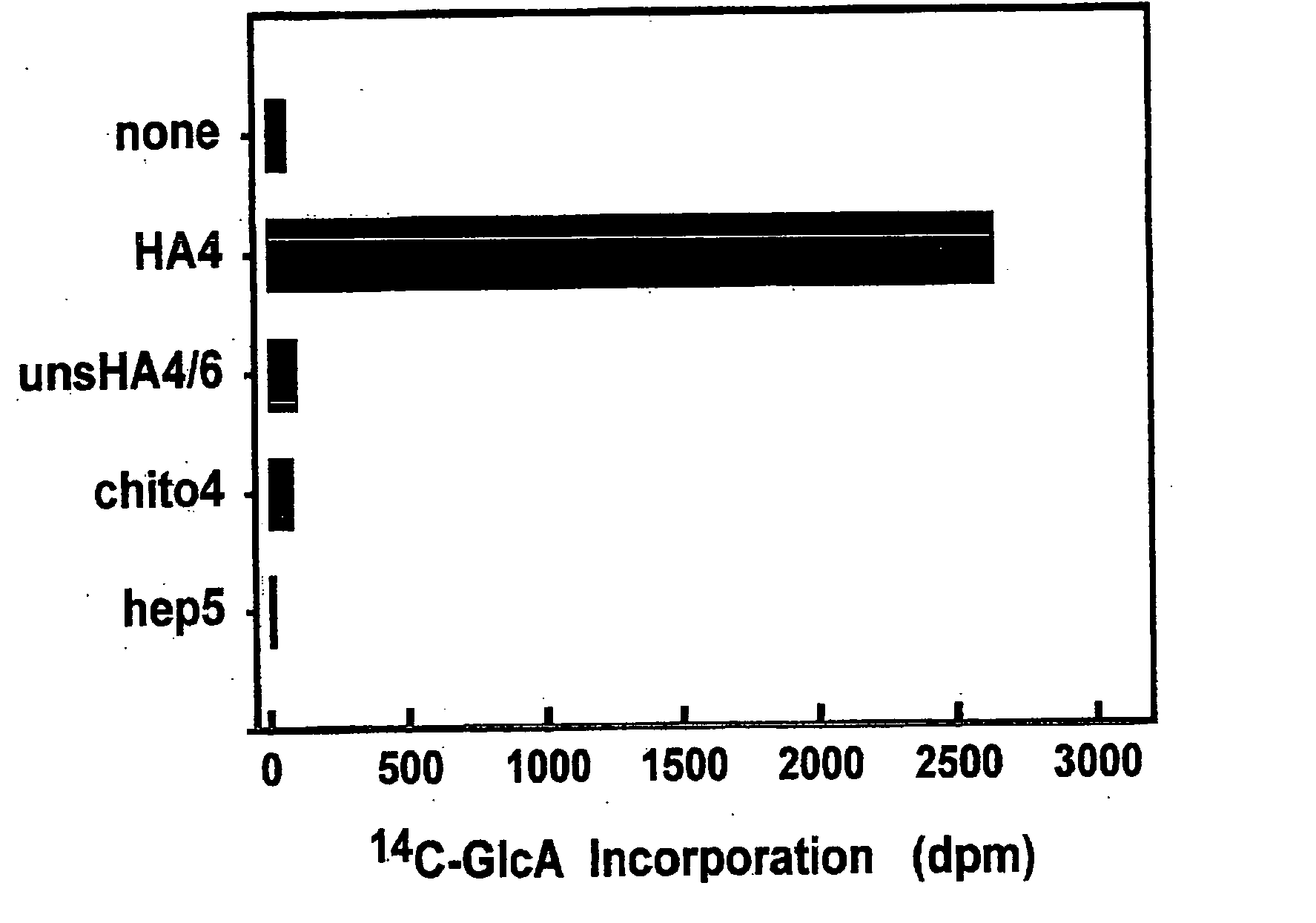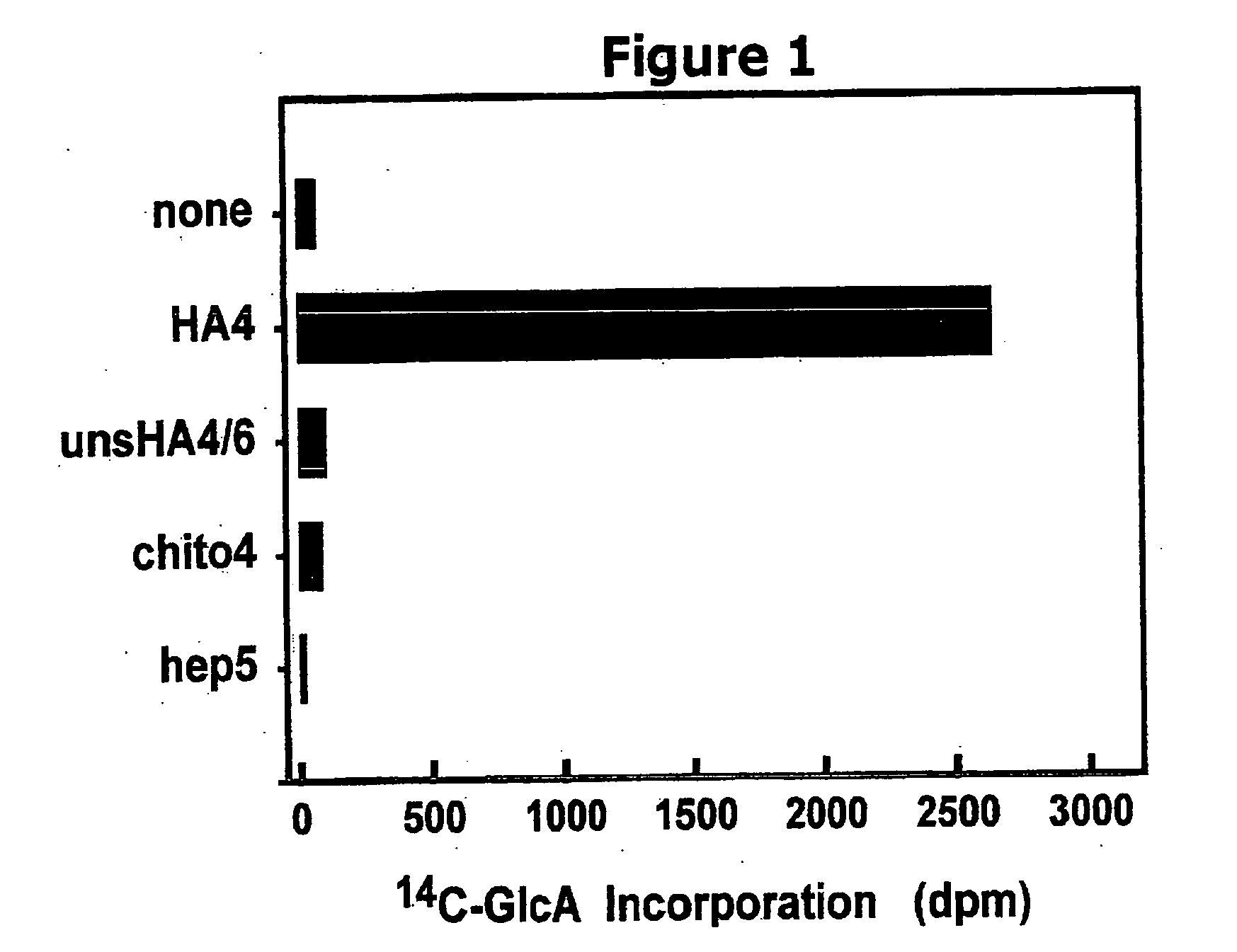Polymer grafting by polysaccharide synthases using artificial sugar acceptors
a polysaccharide synthase and acceptor technology, applied in hydrolases, biochemistry apparatus and processes, enzymes, etc., can solve the problems of difficult control of synthesized synthase proteins, difficult ascertainment, and inability to reproduce large-scale reactions. to achieve the effect of reducing immunoreactivity or inflammation, and reducing the risk of toxicity
- Summary
- Abstract
- Description
- Claims
- Application Information
AI Technical Summary
Benefits of technology
Problems solved by technology
Method used
Image
Examples
Embodiment Construction
class="d_n">[0052] Before explaining at least one embodiment of the invention in detail, it is to be understood that the invention is not limited in its application to the details of construction and the arrangements of the components set forth in the following description or illustrated in the drawings. The invention is capable of other embodiments or of being practiced or carried out in various ways. Also, it is to be understood that the phraseology and terminology employed herein is for purpose of description and should not be regarded as limiting.
[0053] The term “synthetic, artificial acceptor” as used herein will be understood to refer to a sugar-containing compound that does not contain the naturally occurring disaccharide repeat, and thus when extended by a GAG synthase produces a non-naturally occurring glycosaminoglycan derivative. Thus, the new acceptor serves as a GAG mimic; the complex naturally occurring sugar does not need to be synthesized or extracted for use as an a...
PUM
| Property | Measurement | Unit |
|---|---|---|
| temperature | aaaaa | aaaaa |
| Tm | aaaaa | aaaaa |
| Tm | aaaaa | aaaaa |
Abstract
Description
Claims
Application Information
 Login to View More
Login to View More - R&D
- Intellectual Property
- Life Sciences
- Materials
- Tech Scout
- Unparalleled Data Quality
- Higher Quality Content
- 60% Fewer Hallucinations
Browse by: Latest US Patents, China's latest patents, Technical Efficacy Thesaurus, Application Domain, Technology Topic, Popular Technical Reports.
© 2025 PatSnap. All rights reserved.Legal|Privacy policy|Modern Slavery Act Transparency Statement|Sitemap|About US| Contact US: help@patsnap.com



